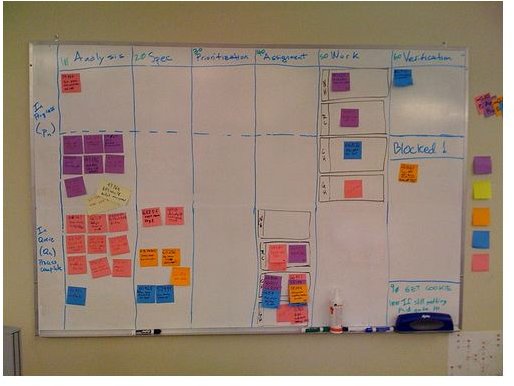A Look Into Just-in-Time Inventory Control (JIT) Inventory Management and Quality Thrust
Just In Time is a management strategy based on planned elimination of all waste and continuous improvement of productivity. Just in Time (JIT) Inventory Control aims at elimination of wastes related to stocking and usage of raw materials and finished inventory.
The earliest application of Just in Time inventory control JIT is by Henry Ford of the Ford Motor Company who applied JIT to manage raw materials during the the early 20th Century.
The origins of JIT as a management strategy is however commonly associated with World War II Japan, when Taiichi Onho sought ways to revive the Toyota Corporation. The application of JIT in the Toyota Manufacturing process met with remarkable success, leading to widespread popularity for the concept. Toyota expanded the concept of JIT from Ford’s inventory control mechanism to a strategy that compasses all parts of an organization including order taking, purchasing, operations, distribution, sales, accounting, design, human resources, and other areas.
The Toyota production System also expanded the concept of waste from excess inventory to include unnecessary processing steps, idling time of machinery, product defects, faulty working techniques, unnecessary transportation, and overproduction.
JIT Inventory Management
The basic principle of JIT is “lean manufacturing” or reduction of inventory. Unlike the traditional accounting notion that considers inventory as adding and storing value, JIT considers inventory as waste and incurring costs.
JIT identifies that accumulating inventory hides inherent problems in the production process such as lack of backups at work centers, faulty machinery, process variability, lack of flexibility and inadequate capacity.
JIT strives to eliminate inventory by:
- efficient and real time monitoring of materials and resource usage in the work process and replenishing materials at the right time, neither too early nor too late
- sourcing raw materials only at the time of production and not stocking raw materials
- scheduling the manufacturing process on demand and shipping the product directly to the customer without incurring inventory storage costs and blocking capital
JIT Continuous Improvement of Product Quality
Just in Time Inventory Control JIT aims at continuous product improvement through many ways, such as:
- identifying things that do not add value to the product or process and removing them
- ensuring that the basic product design remains simple and easy to understand
- ensuring “Quality at Source”, by making each worker responsible for the quality of their work
- placing at the disposal of workers “Poka-yoke” or foolproof tools, methods, and jigs to prevent mistakes
- placing Andon or trouble lights to signal problems and initiate corrective action
Quality interventions such as Total Quality Management, 5S and others aimed at product improvement also form an integral part of the JIT continuous improvement approach.
JIT Process Efficiency
Just in TIme Inventory Control JIT strives to improve process efficiency by identifying waste in processes and eliminating such waste. The ways to attain JIT process efficiency include:
- establishing a product oriented layout that reduces movement of inventory and eliminates queues
- instituting leveled or mixed production to smooth product flow
- establishing Kanbans, or tools to `pull’ inventory and components through the process. Kanbans gives specific instructions to each worker on what parts to use and what to do.
- establishing Jidoka or autonomation. Jidoka automates the production process and automatically shuts down the entire production line on detection of errors. The production line starts again only after fixing the error.
- scheduling preventive maintenance to ensure machinery and equipment functions perfectly when required
- ensuring good housekeeping that ensures workplace cleanliness and organization
- reducing set-up times by instituting tools such as “Single Machine Exchange of Die”(SMED) that reduce batch size to one unit
- developing a multi-skilled workforce and placing importance to improving productivity and job satisfaction.
Conclusion
The remarkable success enjoyed by Toyota led many other companies to benchmark the Toyota system of manufacturing. The concept came back to America by the late 1970’s when Hewlett Packard introduced “stockless production.” Since then, companies such as McDonalds, Dell, Harley Davidson, and others have applied JIT and tasted success.
The success of Just in Time Inventory Control JIT however depends on:
- a thorough understanding of the raw materials required and the quantities required per unit
- reliable source of raw materials
- reliable transportation to source raw materials on demand and ship out finished goods. The 1992 US railway strikes crippled a 75,000-worker General Motors plant running on JIT principles
- stable working conditions
- highly skilled and empowered workforce
Today, more and more companies realize the significant cost and other advantages brought about by the Just in Time Inventory control JIT process and adopt this principle as a source of competitive advantage.
References
- University of Cambridge. Institute of Manufacturing. Just in Time Manufacturing.
- Beasley, J. E. Just in Time.
- Toyota Japan. Toyota Production System.
- Meybodi, Mohammad, Z. Using principles of just-in-time to improve new product development process.
